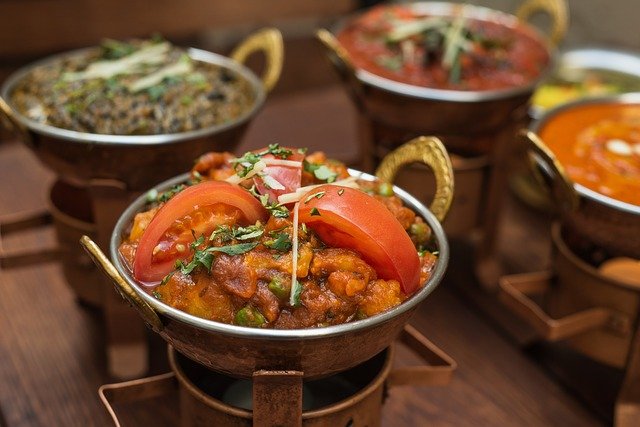Is Indian Food Too Spicy and Oily? Fathima Breaks It Down
Indian cuisine is famous worldwide for its rich taste, vibrant colours, and scented spices. When it comes to food from India, people repeatedly associate it with spicy and oily. This reputation has led many to wonder whether these characteristics are true for every Indian dish. The debate around whether Indian food is too spicy or oily is something that many people outside of the country usually ask. Today, we’re pushing to break it down with acuities from Fathima, who is known for her deep sense of Indian cuisine.
Understanding the Spices in Indian Cuisine
One of the primary reasons that Indian food is frequently seen as spicy is due to its use of various spices. Spices are the foundation of Indian cooking, adding baritone and layers of flavour to every dish. It’s not only about roughly heat; it’s about savouring elaborateness. Chilli peppers, one of the key ingredients in Indian food, absolutely contribute to the spiciness. However, it’s elemental to note that Indian food furthermore uses seasonings like cumin, turmeric, coriander, and cardamom, which are not tangy but add elementary tastes to the dishes
That said, not all Indian food is unduly spicy. For example, North Indian cuisine tends to use less heat in its buzzes compared to South Indian cuisine, where the spiciness is more conspicuous. However, the stage of heat in a dish can always be acclimated based on individual preference. So, if you’re a person who can’t tolerate spicy food, there is a surplus of Indian dishes that cater to an additional encouraging taste.
The Role of Oil in Indian Cooking
When it comes to oil, many people associate Indian food with being oily due to the cooking methods used. Ingredients are often fried or sautéed in oil or ghee (clarified butter) in definitive Indian cookery. This gives dishes a rich texture and contributes to the overall savoury silhouette. However, not all Indian meals are drowned in oil. The perception of greasiness may arise from avenue foods or fried snacks, which are commonly consumed as charms rather than regular meals.
In Indian homes, cooking often concentrates on balance. Dishes are usually crafted with sensible amounts of oil, and ghee is used in precise dishes like dal or biryani to sweeten the morsel and aroma. Over the years, many chefs and home cooks have also initiated healthier cooking plans, using less oil while keeping the daily flavours.

Indian Food is More Than Just Spice and Oil
While spiciness and oiliness are standard elements of some Indian dishes, they are not everywhere across all kinds of Indian food. Indian cuisine is overly varied, and each environment has its own desired cooking style and taste shape. From the mildly seasoned North Indian curries to the pungent and tangy dishes of South India, the span of selections is vast. For example, dishes like methi thepla, dosa, and idli are not unduly spicy, and they are wanted by someones from all around the world for their delicate flavours.
Moreover, Indian cuisine offers a variety of vegetarian and vegan dishes, many of which are faded and nutritious. These dishes are naturally slightly oily and can be filled with the tiniest herbs to suit the selections of those who are not lovers of assertive flavours. So, it’s safe to say that Indian food isn’t always about the heat or the oil.
The Global Appeal of Indian Cuisine
In recent years, the global appetite for Indian food has grown entirely. As people from various cultures explore Indian cuisine, they are realising a vast array of dishes outside the spicy and oily stereotypes. Many cafeterias around the world now offer Indian food with more spice levels to cater to myriad tastes. Similarly, Fathima's Indian Kitchen offers a wonderful selection of Indian dishes that can be adjusted to your selected spice level, verifying that Indian cuisine is all about versatility.
The Truth About Indian Food’s Reputation
So, is Indian food too spicy and oily? The answer is no—it all depends on what you select. While some dishes are indeed spicy and oily, others are light, refreshing, and mild. The misunderstanding often comes from those who are only aware of a few of the more spirited, more harsh flavours of Indian cuisine. Indian food is all about harmony, and there is a dish for every palate, whether you respect spicy food or not
Conclusion
Indian food offers a wide multiplicity of dishes, with its unique mix of flavours and ingredients. Fathima's Indian Kitchen offers options that cater to a range of tidbits, corroborating that whether you're a fan of spicy dishes or select something milder, you can find something you’ll enjoy. While some curries can be spicy or oily, there are many others that are delicate and flavorful, making Indian food proper for everyone. At the end of the day, it’s all about locating the dishes that fit your taste selections and appreciating the rich culinary legacy India has to offer. Is Indian Food Too Spicy and Oily? Fathima Breaks It Down.




Leave a Comment
Comments (0)